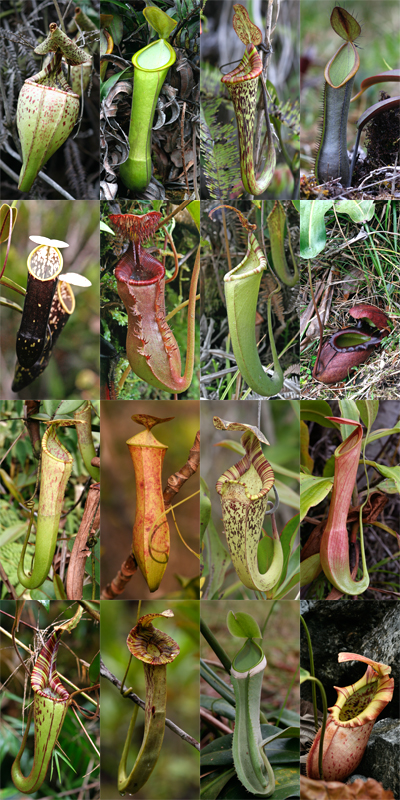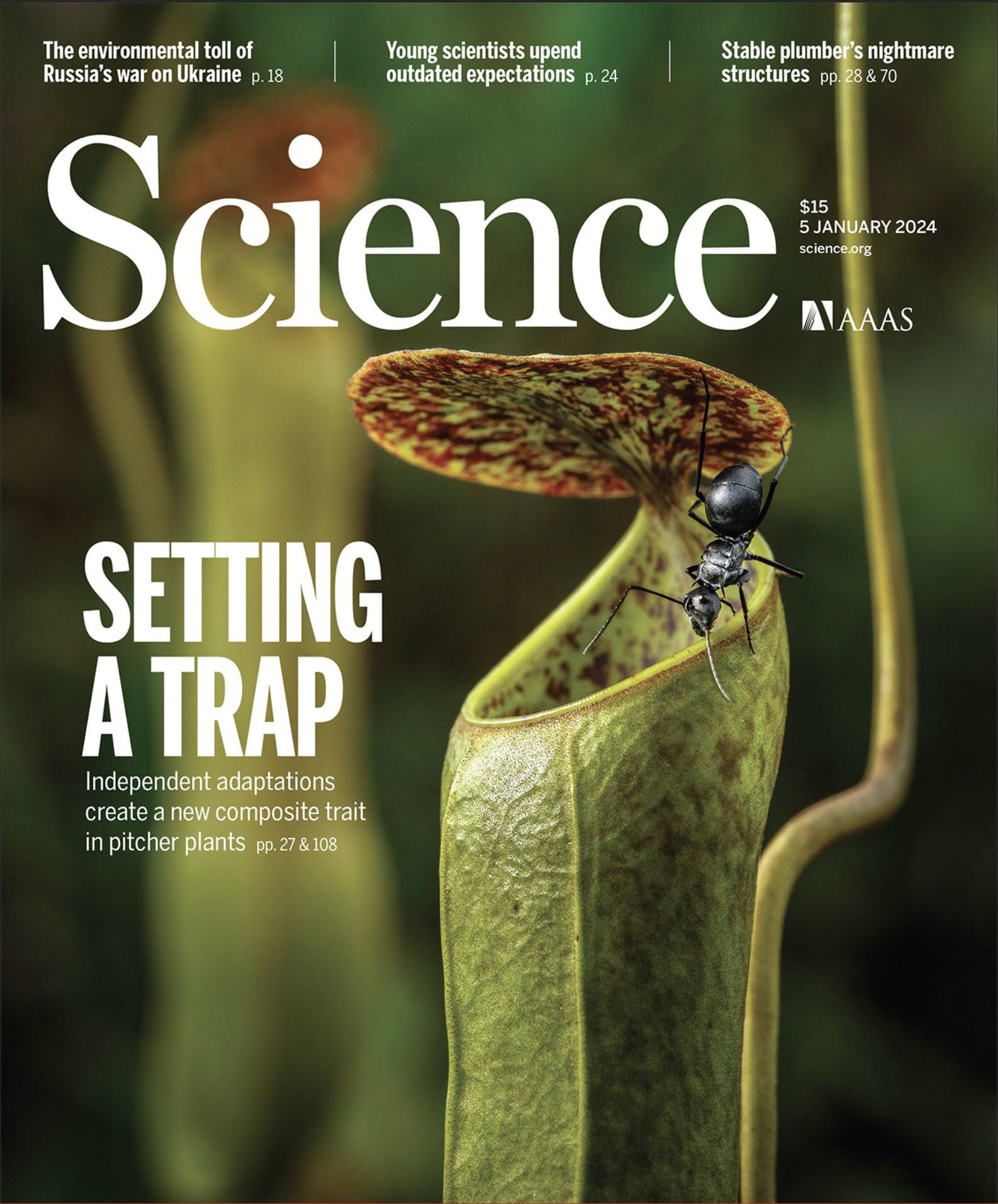Collaborative project with Guillaume Chomicki, Gustavo Burin, Luke Busta, Reinhard Jetter, Jedrzej Gozdzik and Beth Mortimer
Looking at the astonishing diversity of pitcher shapes and sizes across – and beyond – the genus Nepenthes, one can’t help but asking how this could evolve. Pitcher traps evolved multiple times independently in plant lineages scattered around the globe and as unrelated to one another as humans and flatworms. Meanwhile, the over 150 species of Asian Nepenthes pitcher plants have evolved a great diversity of trapping mechanisms, ranging from slippery pitfall traps to rain-powered springboards, sticky glue-like secretions and light traps. Some species have even given up trapping live prey and instead evolved to collect animal droppings or leaf litter!
 Nepenthes lowii evolved toilet-shaped pitchers to attract tree shrews and collect their feces. This specialisation is so extreme that the pitchers don’t function as insect traps anymore.
Nepenthes lowii evolved toilet-shaped pitchers to attract tree shrews and collect their feces. This specialisation is so extreme that the pitchers don’t function as insect traps anymore.
Over the years, we have repeatedly collaborated with evolutionary biologists to try and understand the evolution of such a diversity of trapping mechanisms. In the early days of the lab, Ulrike, Christofer Clemente (UniSC) and Tanya Renner (Penn State University) did a comparative analysis of pitcher morphometrics across five dozen species and found that there was an inverse relationship between the size and steepness of the pitcher rim on one hand, and the investment in slippery wax crystals on the inner pitcher wall surface on the other hand. In other words, pitfall-trapping Nepenthes adopted two distinct trapping strategies, investing alternatively in a larger and more effective aquaplaning surfaces or a slippery inner wall.
 Nepenthes pitchers come in a great diversity of shapes and sizes. We could show that this morphological diversity is linked to distinct, alternative trapping strategies.
Nepenthes pitchers come in a great diversity of shapes and sizes. We could show that this morphological diversity is linked to distinct, alternative trapping strategies.
More recently, our discovery that two distantly related Nepenthes species, N. gracilis from Borneo and N. pervillei from the Seychelles, independently evolved the same springboard mechanism for prey capture, prompted us to investigate how such complex new traits can arise. Springboard trapping is not trivial: three independent traits need to come together in exactly the right constellation for the trap to work. First, the pitcher lid needs to act as a spring. Second, the underside of the lid needs to be afford enough grip for insects to enter and walk on it upside down, but be slippery enough for the prey to loose their footing when a raindrop strikes from above. To this end, N. gracilis and N. pervillei have evolved a special wax crystal coating with unique crystal morphology, very different to the wax crystals on the inner pitcher wall. Finally, the lid needs to be oriented horizontally, so that the prey doesn’t miss the pitcher when it is catapulted off. All three traits only gain a function when they are combined – so how can this evolve? Together with evolutionary biologists Guillaume Chomicki (Durham University) and Gustavo Burin (London National History Museum), biochemists Luke Busta (University of Minnesota), Reinhard Jetter and Jedrzej Gozdzik (UBC Vancouver), and biophysicist Beth Mortimer (University of Oxford), we were able to show that this astonishing trapping mechanism most likely arose by pure coincidence, but the odds for it to happen were raised by the high plasticity of the three traits involved. In other words, by allowing those traits to vary widely, the chances for a beneficial combination coinciding were increased. We thought this was a pretty wild story and fortunately, the prestigious Science magazine agreed!
